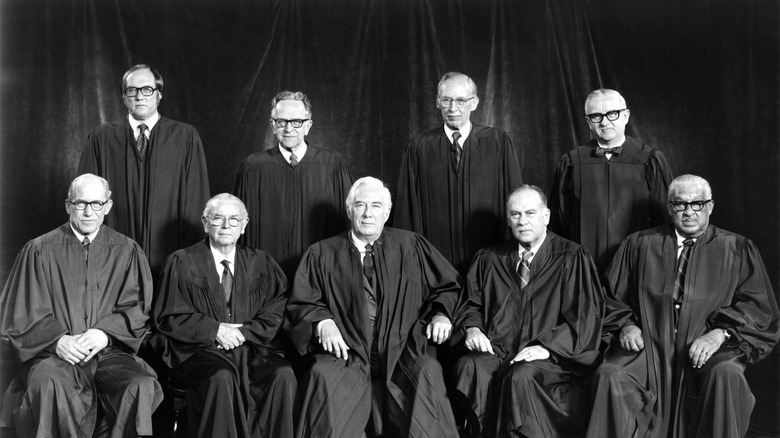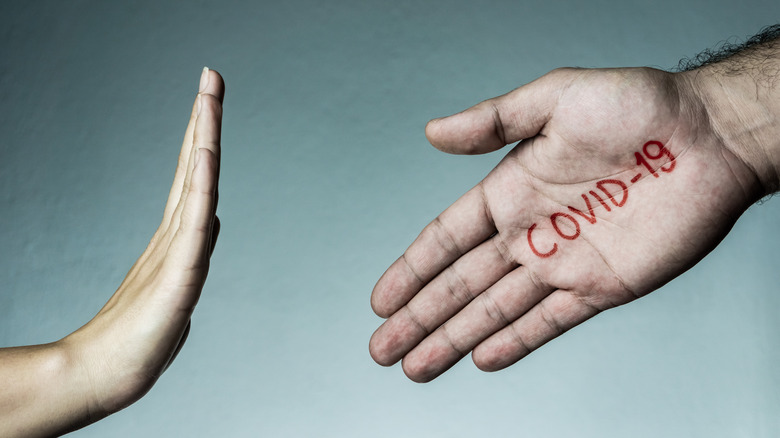What Is The Judicial Handshake Of The Supreme Court?
The Supreme Court's rich history in the United States finds its roots in the late 1700s, with its first assembly dating all the way back to 1790 (via Supreme Court). Over the course of its more than 232-year run as the federal judiciary, the Supreme Court has held firm many traditions and even invented a few new ones along the way. One of the most heralded of these is the judicial handshake. While not a part of the original Supreme Court routine, the treasured gesture is a fan favorite for many judges.
According to Supreme Court, the late Associate Justice Ruth Bader Ginsburg told a Boston audience in 2009, "Before each day in Court begins, and before each conference discussion, as we enter the Robing Room or the adjacent Conference Room, we shake hands, each Justice with every other."
The tradition of the handshake goes back as far as around the 420s A.D., per JSTOR Daily, with the Quakers being the first to use the social gesture in the U.S. The simple act of the handshake represents a sort of friendly equality between the two people engaged in the act.
The judicial handshake is just a regular handshake
If you were envisioning some smooth flicks of the wrist followed by any sort of snapping, hand sliding, or fist-bumping, sorry to disappoint. While it does have a somewhat intriguing name, the judicial handshake is really just a regular handshake. Two people face one another, each with one arm extended, meeting in the middle, clasping hands, and shaking firmly up and down.
The only difference between this handshake and one you might spy at other formal gatherings is the fact that it happens between justices as they head into private meetings where they discuss decisions that will ultimately shape the fate and future of our nation. The handshake is not only traditional but also a tradition. Introduced by Chief Justice Melville W. Fuller in the late 19th century, the handshake has been used for over a century to remind the judges of their "harmony of purpose" even in times when they might have a difference of opinion (via Supreme Court).
The conference handshake was halted during the pandemic
When the pandemic swept the country, it altered the way we interact with one another. On a much grander scale, it even altered the social interactions between the justices serving on the Supreme Court. According to Law, at the height of the international public health scare, this tried and true tradition of shaking hands between judges was temporarily put on pause, perhaps as a testament to the disjointed nature of an isolated world.
Now, it appears that the handshake gesture itself has garnered a great many critics, whether it is happening in a courtroom, on a courtyard, or someplace in between. For some, the handshake is a constant reminder of the goal of unity. For others, it is a germ-spreading, antiquated social gesture (via NPR). Given the circumstances, it's difficult to say if the judicial handshake will have a place in future conference assemblies. One thing is certain, though. It will forever hold its place in the history books as one of the Supreme Court's warmest traditions.


